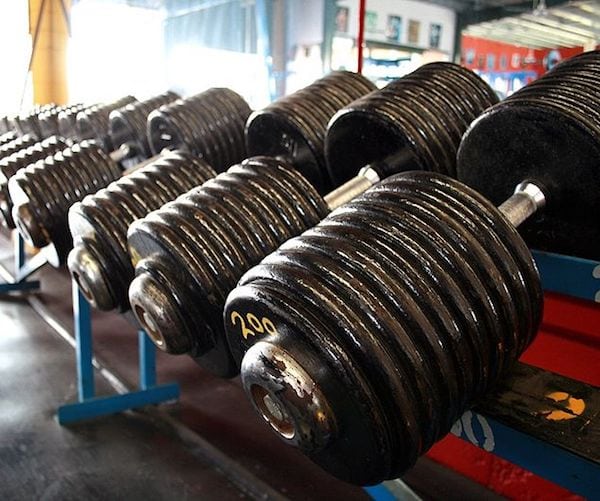No products in the cart.
Building Muscle with Light Weights – Is it possible?

There are hundreds of different rep and set combinations, but you can usually split rep ranges into three categories: Strength (1-6), Hypertrophy (7-12) and Endurance (12+).
Strength training targets the type-2 muscle fibres and for a long time was thought of solely as a way to increase strength.
Hypertrophy training works both muscle fibres and is seen as a way to increase muscle size, whilst endurance training is mostly thought of as a way to increase muscular endurance, it works the type-1 muscle fibres almost exclusively.[toc]
Benefits of heavy weights and low reps

Lifting heavy weights for low reps has often been seen as the preserve of strongmen and powerlifters, it was believed that performing sub 6 rep sets could only increase muscle strength and power.
In recent times however, more and more coaches have come round to the fact that low rep strength training can also have a big effect on muscular hypertrophy. Meaning that muscles will get bigger and stronger as a result of this training protocol.
This means that strength training can give you the best of both worlds!
Benefits of medium weights in the hypertrophy range
Training in the rep range of 7 to 12 reps is known as the hypertrophy range, and is the staple rep range for most gym goers and obviously bodybuilders.
There have been a lot of studies on this rep range and interestingly it has been found that training in the hypertrophy range not only increases muscle size, but also strength [1].
Benefits of light weights and high reps
The final rep range of anything over 12 is usually seen as a method for increasing muscular endurance, and as such is not rated very highly by many.
But a recent study has found that going high rep can increase total volume lifted when compared to higher weights and lower reps [2].
This is excellent news because one of the most effective ways to build muscle is to increase the volume, as it leads to a higher amount of muscle fibres recruited.
Because of this, and the fact that training the type 1 muscle fibres can also lead to hypertrophy there are now a lot of coaches who believe that adding high rep sets to your program could lead to increased strength and hypertrophy gains.
Other uses for light weights
Another use for lighter weights is to increase metabolic damage, this is where you train your muscles to failure.
Think drop sets, where you immediately lower the weights after you can’t perform a rep, training until you reach complete muscular fatigue. This form of training can lead to more muscle fibre activation and an increase in testosterone and growth hormone release [3].
A similar training method is to use back off sets, this is where you train normally using low reps and high weights.
After your final set you rest for 2-3 minutes and then lower the weight to around 50% of the original weight. Then you will perform a high-rep set (12+ reps). This has been shown to massively increase muscular endurance, but also to increase strength and hypertrophy [4].
The benefits of training across a range of reps
These days most fitness experts recommend training across a wider rep range, in other words mix up low-rep/high weight sets with higher rep sets and medium rep sets throughout your workout.
Add drop sets or back off sets to your program, but use them sparingly as they are highly fatiguing. It is believed that training this way will lead to even better hypertrophy and strength gains, while the back off sets will also massively increase muscular endurance.
So the answer to the question is that yes you can build muscle with lighter weights (remember even your heaviest set might be light to a powerlifter!).
But you will get the best results if you mix your program up and use different rep ranges for exercises, maybe using low reps for bench press one day and then higher reps two days later. Or just adding in a drop set to the end of your last bench press set.
Save

Tbh Most guys are ego lifters, so even if the science says one thing they will continue to lift heavy to impress their mates. Risking injury lifting with bad form. Sad but true.